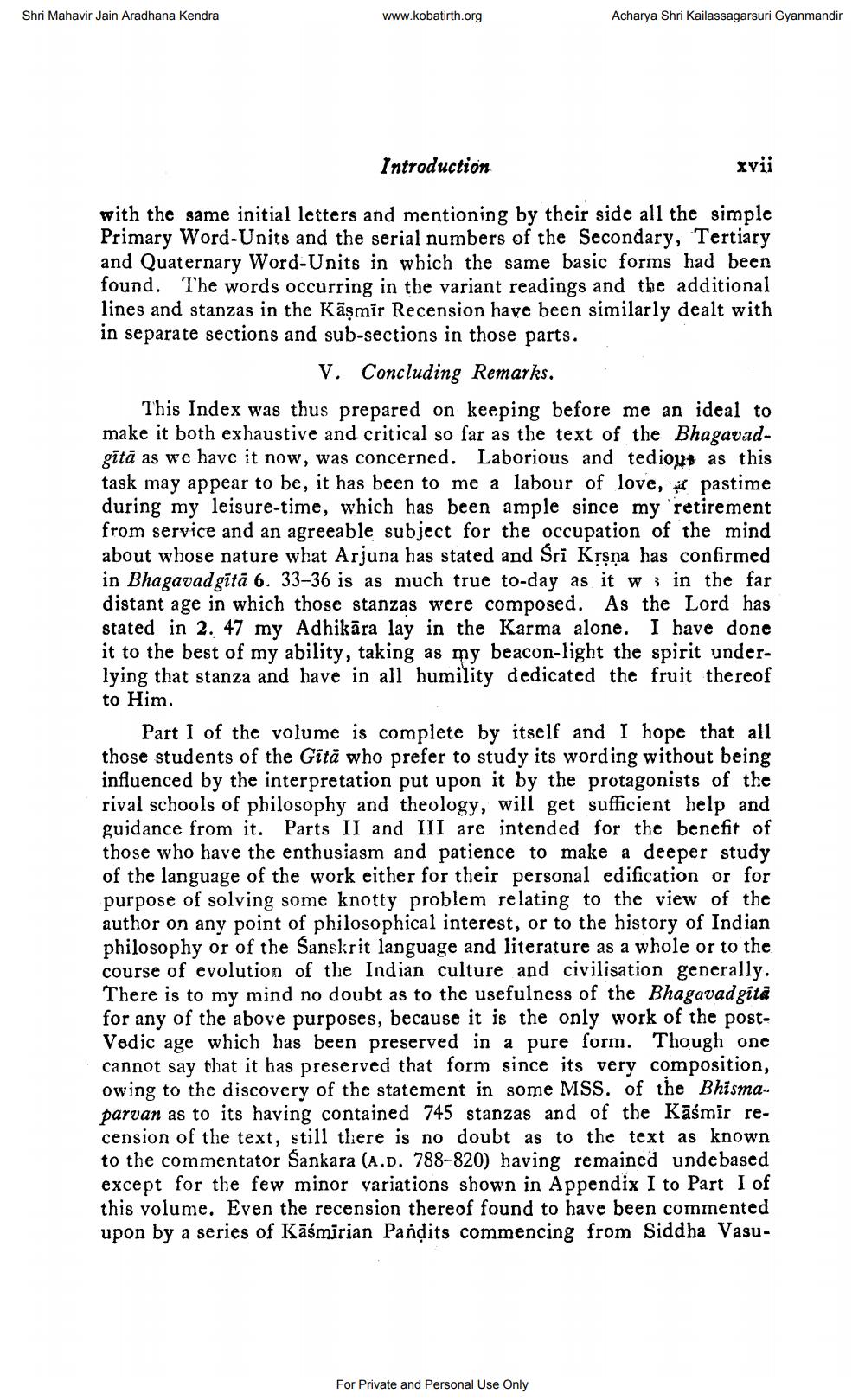________________
Shri Mahavir Jain Aradhana Kendra
www.kobatirth.org
Acharya Shri Kailassagarsuri Gyanmandir
Introduction
with the same initial letters and mentioning by their side all the simple Primary Word-Units and the serial numbers of the Secondary, Tertiary and Quaternary Word-Units in which the same basic forms had been found. The words occurring in the variant readings and the additional lines and stanzas in the Kaşmir Recension have been similarly dealt with in separate sections and sub-sections in those parts.
xvii
V. Concluding Remarks.
This Index was thus prepared on keeping before me an ideal to make it both exhaustive and critical so far as the text of the Bhagavadgītā as we have it now, was concerned. Laborious and tedious as this task may appear to be, it has been to me a labour of love, pastime during my leisure-time, which has been ample since my retirement from service and an agreeable subject for the occupation of the mind about whose nature what Arjuna has stated and Śrī Kṛṣṇa has confirmed in Bhagavadgītā 6. 33-36 is as much true to-day as it ws in the far distant age in which those stanzas were composed. As the Lord has stated in 2. 47 my Adhikara lay in the Karma alone. I have done it to the best of my ability, taking as my beacon-light the spirit underlying that stanza and have in all humility dedicated the fruit thereof to Him.
For Private and Personal Use Only
Part I of the volume is complete by itself and I hope that all those students of the Gita who prefer to study its wording without being influenced by the interpretation put upon it by the protagonists of the rival schools of philosophy and theology, will get sufficient help and guidance from it. Parts II and III are intended for the benefit of those who have the enthusiasm and patience to make a deeper study of the language of the work either for their personal edification or for purpose of solving some knotty problem relating to the view of the author on any point of philosophical interest, or to the history of Indian philosophy or of the Sanskrit language and literature as a whole or to the course of evolution of the Indian culture and civilisation generally. There is to my mind no doubt as to the usefulness of the Bhagavadgitā for any of the above purposes, because it is the only work of the postVedic age which has been preserved in a pure form. Though one cannot say that it has preserved that form since its very composition, owing to the discovery of the statement in some MSS. of the Bhisma. parvan as to its having contained 745 stanzas and of the Kāśmir recension of the text, still there is no doubt as to the text as known to the commentator Sankara (A.D. 788-820) having remained undebased except for the few minor variations shown in Appendix I to Part I of this volume. Even the recension thereof found to have been commented upon by a series of Kaśmirian Pandits commencing from Siddha Vasu




